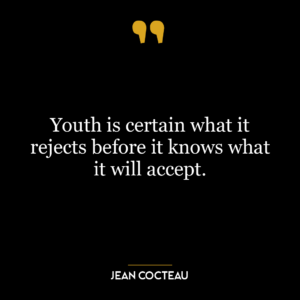This quote implies that contemporary society, particularly in Western cultures, holds a deep admiration and preference for youth. This reverence can be seen in various aspects of our society, ranging from the media, advertising, entertainment, to the job market. There is a strong emphasis on youthfulness, which is often associated with beauty, vitality, innovation, and potential.
The quote suggests that this focus on youth is not just a recent phenomenon but has become increasingly pronounced. This may be attributed to various factors such as advancements in technology, shifts in cultural values, and the rise of consumerism. Today’s society often equates youth with progress and dynamism, while aging is often associated with decline and obsolescence.
In the context of personal development, this quote can serve as a reminder of the societal pressures and expectations surrounding age. It could be used to highlight the importance of maintaining physical health, staying updated with current trends and technologies, and continuously learning and adapting to stay relevant in today’s fast-paced world.
However, it also raises questions about the value we place on experience, wisdom, and maturity, which are typically associated with older age. It suggests a need to reevaluate our attitudes towards aging and to recognize that every stage of life has its own value and significance. This could involve challenging age-related stereotypes, promoting intergenerational dialogue and collaboration, and fostering a culture that respects and values all ages.
At the same time, it could also serve as a call to embrace our own aging process, to not fear or resist it, but to see it as a natural and enriching part of life. This might involve cultivating a sense of self-acceptance, focusing on personal growth and fulfillment, and finding ways to contribute to society that are not solely based on youthfulness.
In a broader societal context, this quote could prompt discussions about ageism, the role of media in shaping perceptions of age, and the need for policies and practices that support people of all ages. It could also inspire efforts to create a more inclusive and diverse society that values and respects individuals across the lifespan.




